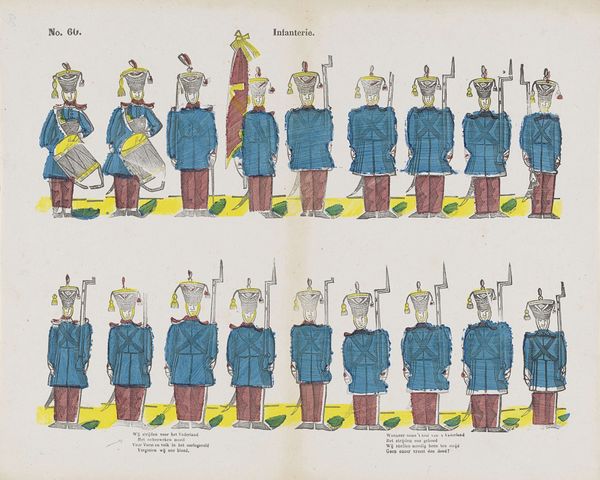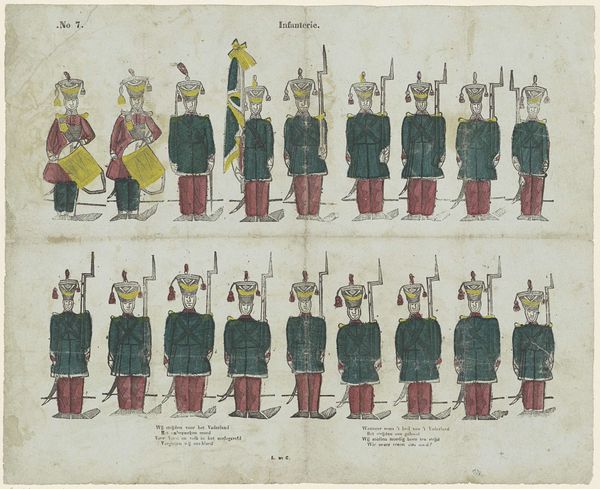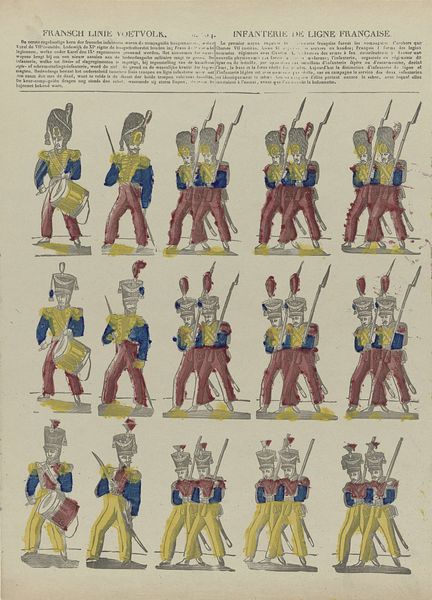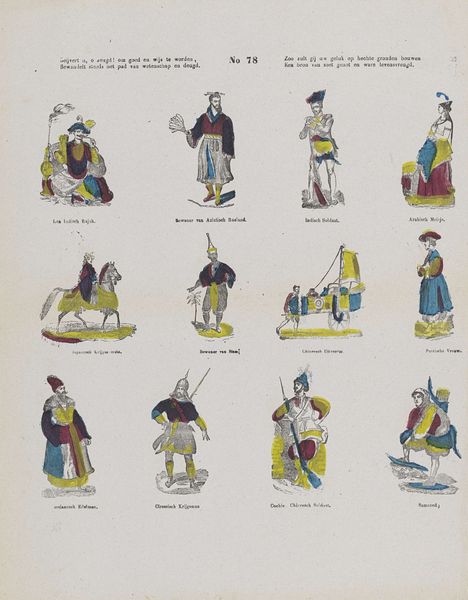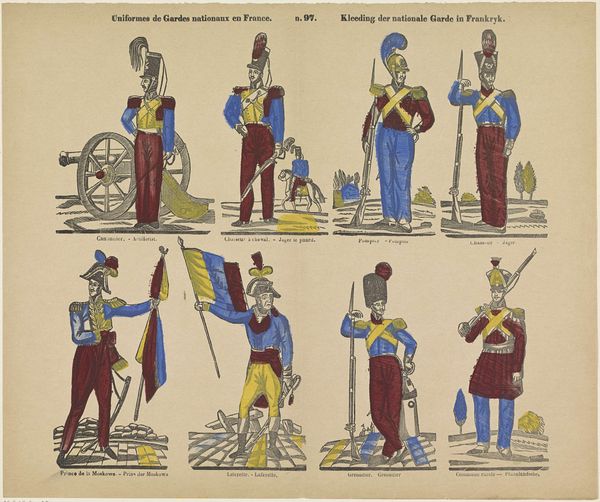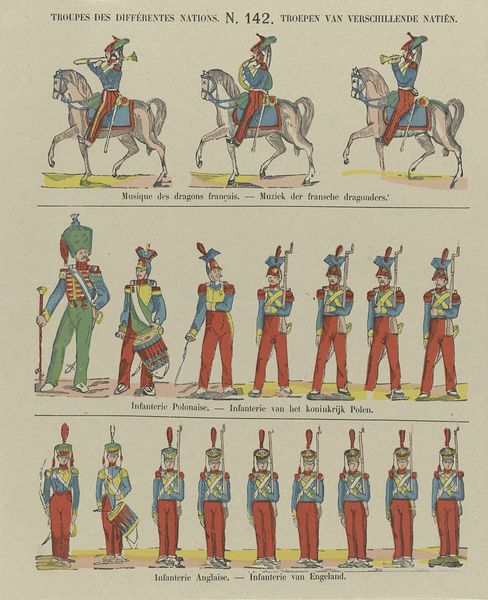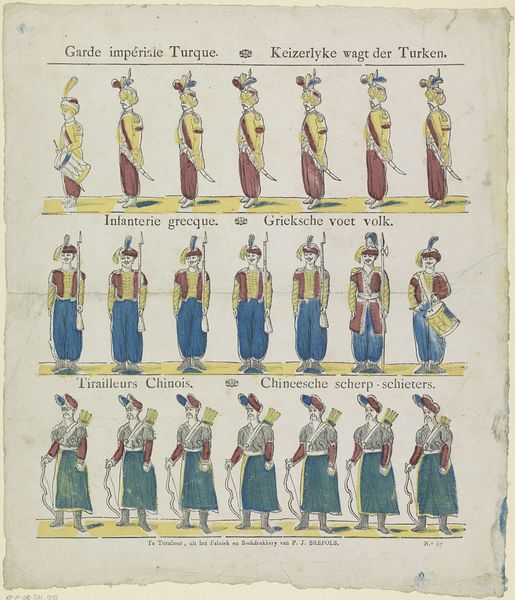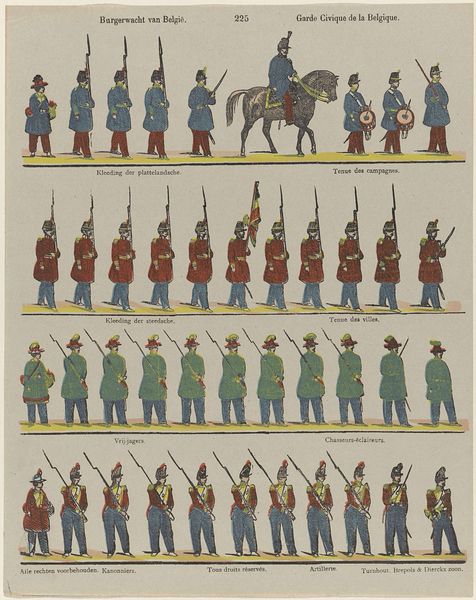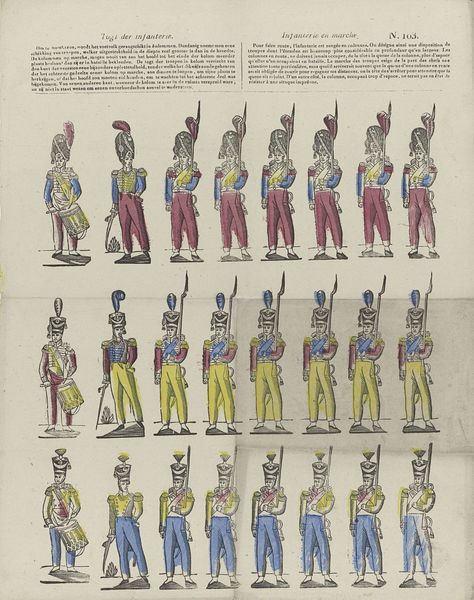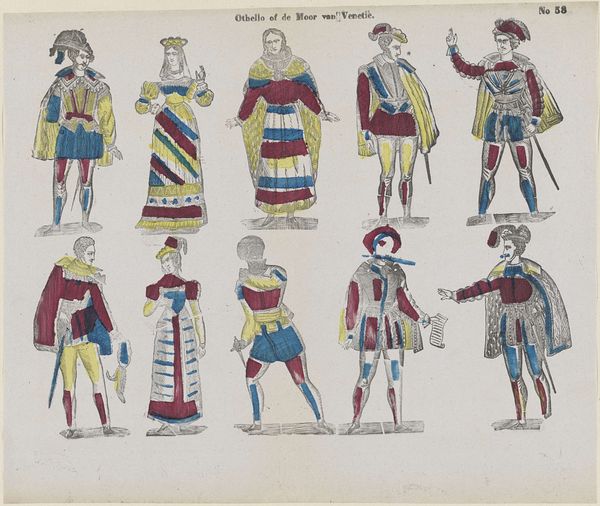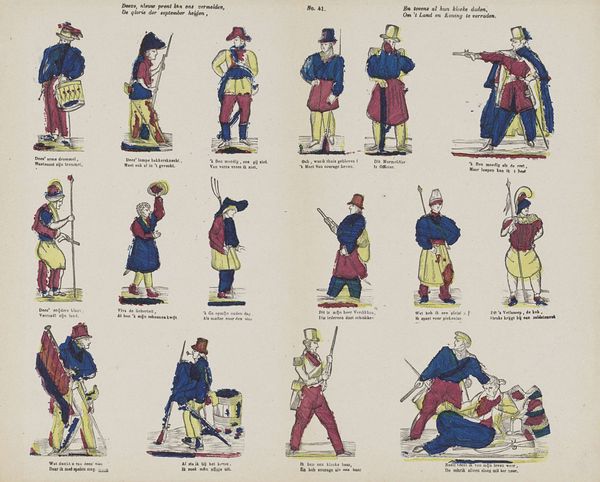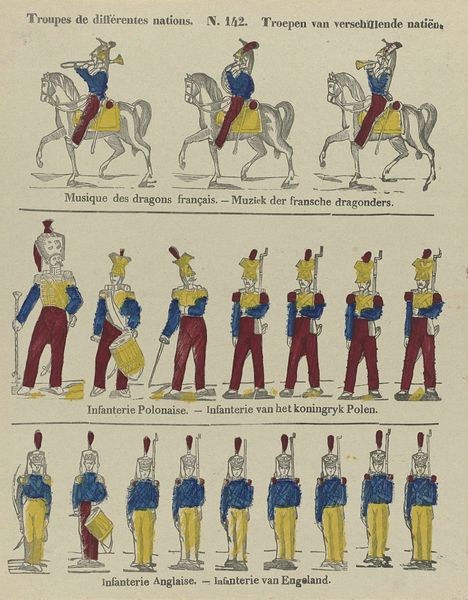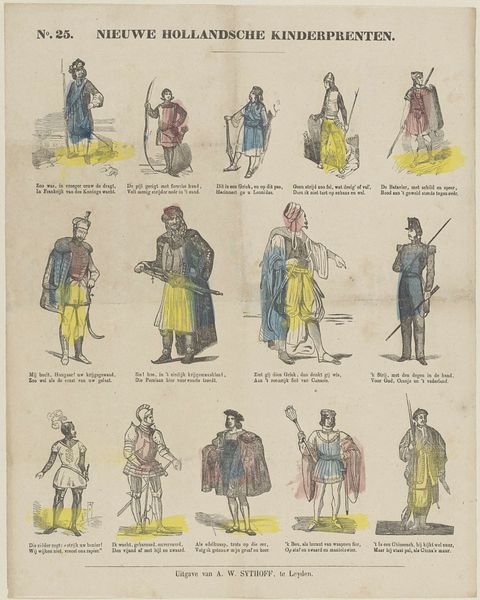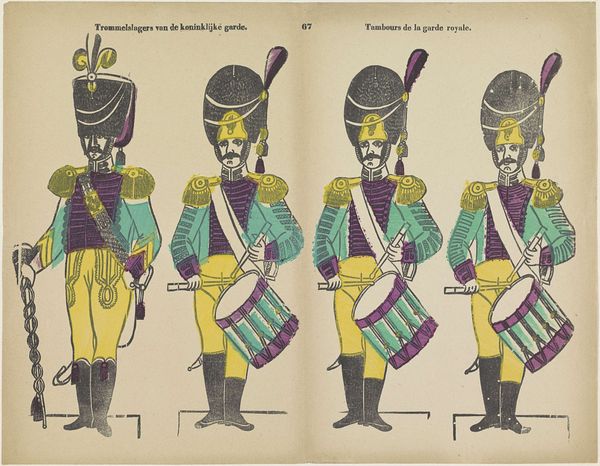
drawing, lithograph, print
#
portrait
#
drawing
#
lithograph
# print
#
genre-painting
#
history-painting
#
academic-art
Dimensions: height 315 mm, width 394 mm
Copyright: Rijks Museum: Open Domain
Editor: Here we have "Infanterie," dating sometime between 1848 and 1881, by Lutkie & Cranenburg. It’s a lithograph, and there’s something about the rows of soldiers, almost like paper dolls, that feels both ordered and a little unsettling. What do you see in this piece? Curator: I see a fascinating snapshot of 19th-century cultural anxieties and aspirations expressed through military imagery. Look at how each uniform, while subtly different, contributes to an overall image of regimented power. These symbols carry tremendous emotional weight related to national identity. Do you notice how the precise details, despite the print’s somewhat rudimentary quality, point towards an obsession with visual order? Editor: Yes, there's almost a clinical approach, documenting different uniforms. But what’s the meaning behind that? Is it purely about record-keeping? Curator: Perhaps not "purely." Consider the rise of nationalism during this period. Uniforms weren’t just practical garments; they were potent symbols of belonging, duty, and national pride. These figures almost become icons. How do the colors and patterns evoke a specific mood? Editor: They feel… almost artificial, somehow. The colors are bright but a little flat, not very naturalistic. Curator: Exactly! That artifice speaks to a constructed ideal of nationhood and military strength. These aren't meant to be realistic portraits of soldiers. They're representing *ideas* about the military’s role in society, aspirations for a well-defined nation through clearly recognizable uniforms. The imagery functions as a tool of propaganda, instilling a sense of shared purpose and identity. How does that cultural memory resonate with you? Editor: It makes me think about how we still use symbols and imagery today to build a sense of belonging. Thanks, it is intriguing to think about uniforms not just as clothing, but also as historical symbols of power. Curator: Precisely. Examining this kind of imagery reveals continuity between past aspirations and present-day experiences. A seemingly simple print unlocks layers of cultural significance.
Comments
No comments
Be the first to comment and join the conversation on the ultimate creative platform.
